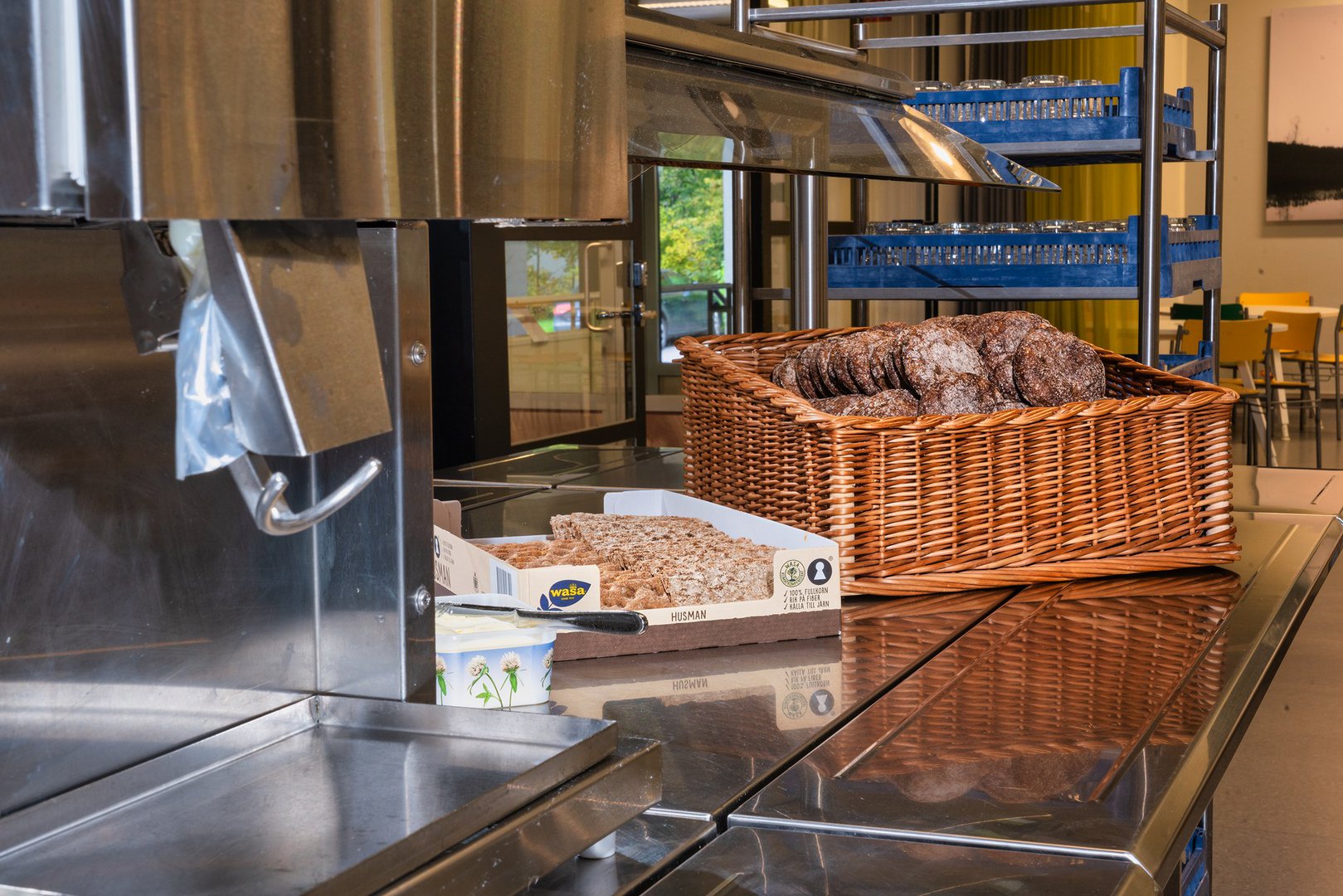Necessary Steps
- The service personnel and managers discuss, agree on, and plan a service without trays.
- Customers are informed about the change and how it will work.
- Necessary changes are made to the serving line, and a separate pick-up point could also be added for drinks and bread, spreads, cutlery, and napkins as needed.
- Trays are removed from the serving line.
- A single-plate-and-glass practice is introduced.
- The customer collects the salad, main course, and side dishes from the line onto the plate and then takes the drink to the dining table.
- Bread, spreads, cutlery, and napkins can be collected from a separate serving table in the dining room, in the immediate vicinity of the dining table.
- The customer can collect more food from the line without queuing, if this is mutually agreed, or from a separate serving point for extra food.
- The food service personnel help customers to adopt this new practice and collect customer feedback for possible future developments.
More Issues To Consider
- Customers may dislike the service without trays to begin with, but will eventually accommodate the change.
- Catering personnel have reported better levels of occupational health, as heavy work on the wrists is reduced.
- It is possible that food and drink consumption will decrease, as collecting extra helpings requires more customer effort.





